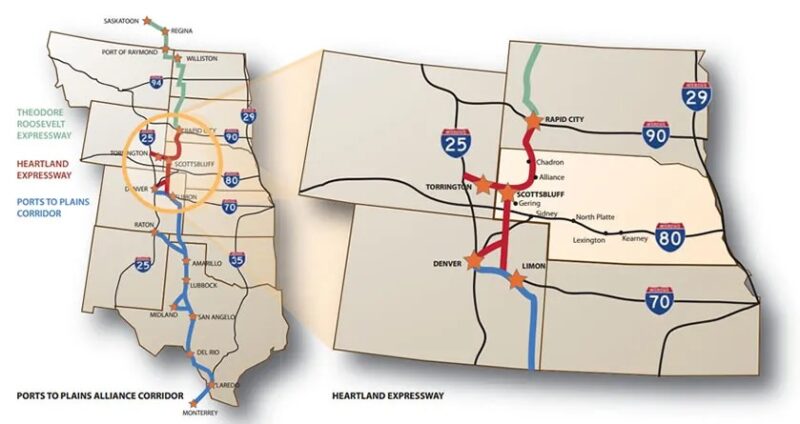![]()

By Kerri Rempp
Two phases of the Heartland Expressway are in the planning stages, with construction tentatively scheduled in the next several years. The update was provided at the Heartland Expressway annual meeting last Thursday.
With $12.8 million in federal funding secured by Sen. Deb Fischer, work can continue on the segment of the Heartland Expressway that includes U.S. 26 from Minatare to Highway 385. Austin Kellogg, the District 5 construction engineer for the Nebraska Department of Transportation, said that project is in the design and environmental study stage.
The multi-year construction is currently slated to begin in 2026, but that could change based on any number of factors, Kellogg said.
In 2027, NDOT is expected to begin the Chadron North portion of the Heartland Expressway, converting it into a Super-2 by adding two passing lanes and making other improvements from Chadron to the South Dakota border. A separate project will resurface Highway 20 from the junction to Highways 20 and 385 to Chadron. Sen. Fischer is seeking $7 million in federal funding for the Chadron North segment, Kellogg said.
The Super-2 alternative is an intermediate step that will provide improvements to the roadway without the expense and complexity of a full four-lane expansion. The final portion of the Heartland Expressway, from Alliance to Chadron, is also expected to be built as a Super 2 initially.
The expressway, part of the larger Port-to-Plains effort to construct a four-lane expressway from Mexico to Canada, is important to economic development and trade. It also will serve as a way to connect people and places, lend resilience to the U.S. highway system and improve safety, said Lauren Garduno, the CEO of the Ports-to-Plains Alliance.
Laredo, Texas, has become the number one port in the nation, and additional economic corridors are opening in Mexico and Canada. The Ports-to-Plains effort will increase the trade influence to a wider area as the states along the route will be able to capitalize on an expected $900 billion in trade from Canada and Mexico by 2050.
Garduno encouraged residents to stay engaged in the process and reach out to public officials to let them know their needs. Nebraska is an agricultural state, and better access to markets at a decreased cost will benefit them, he added.
